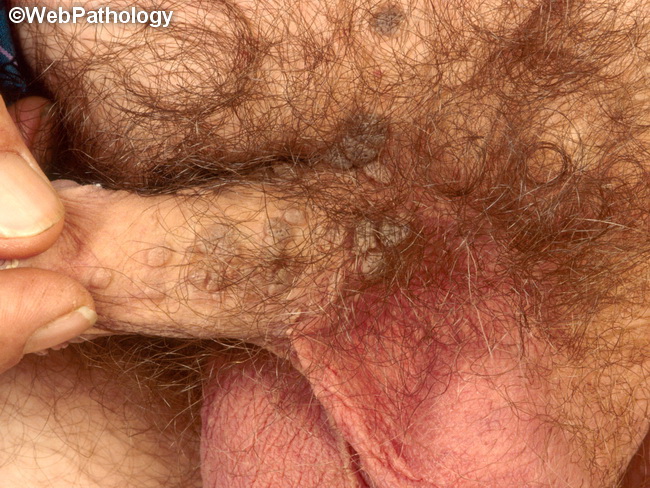Condyloma Acuminata : Intro


Comments:
Condyloma acuminata are exophytic lesions caused by human papillomavirus (HPV) types 2, 6, 11, 16, 18, 30-33, 35, 39, 41-45, 51-56, and 59. HPV6 and 11 are responsible for > 90% of cases of external visible lesions, with HPV6 contributing two-thirds and HPV11 contributing the remaining one-third of cases. A patient may be infected with more than one type of HPV. Most condylomas are transmitted sexually by minor trauma during intercourse. Men whose sexual partners have HPV-related cervical lesions have an increased incidence of condylomas. Transmission occurs more readily from females to males than from males to females. The incubation period is 2 to 3 months. Once an infection occurs, autoinfection is common. Most HPV infections are asymptomatic and subclinical. Condyloma acuminata most frequently occur in sexually active individuals between the ages of 20 to 40 years, when they may be associated with other genital infections. They are rare in children and should raise the concern for sexual abuse. Anogenital warts are common in HIV-infected individuals. The image shows condylomata on penile shaft and pubic area as multiple, raised, flesh-colored papules with a rough surface.



